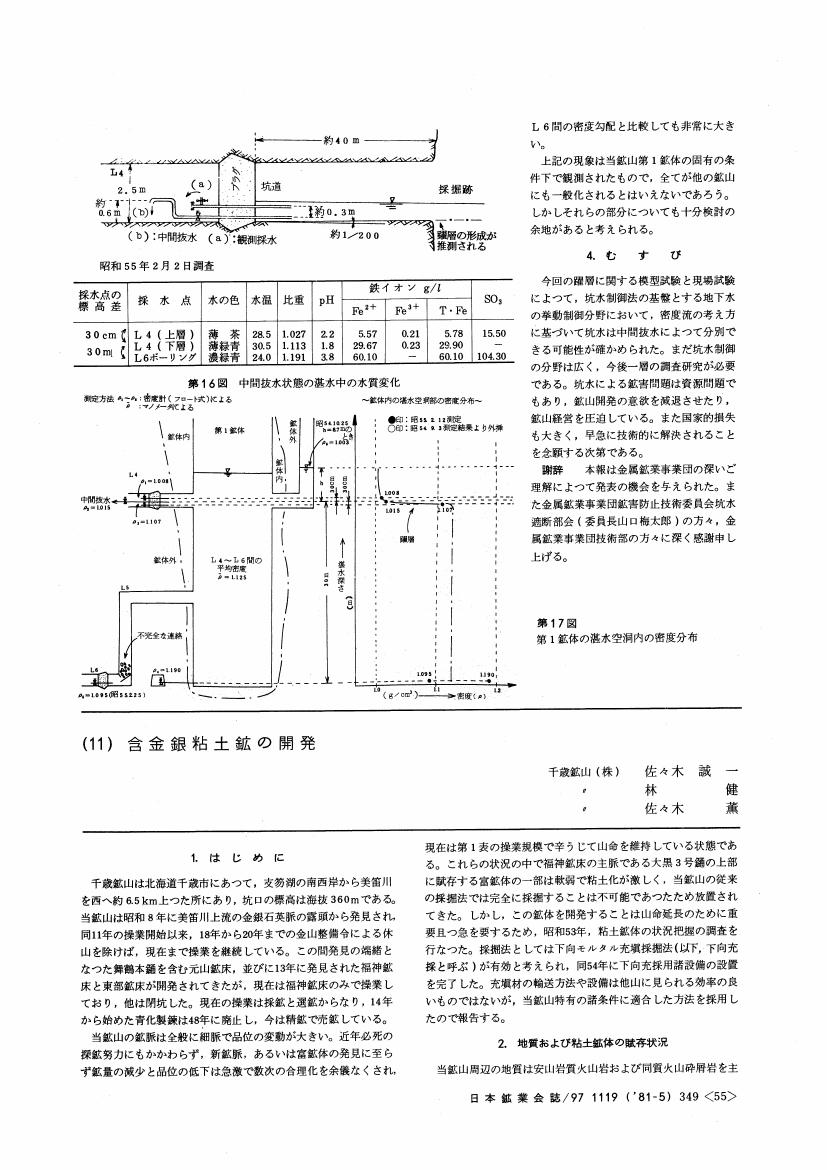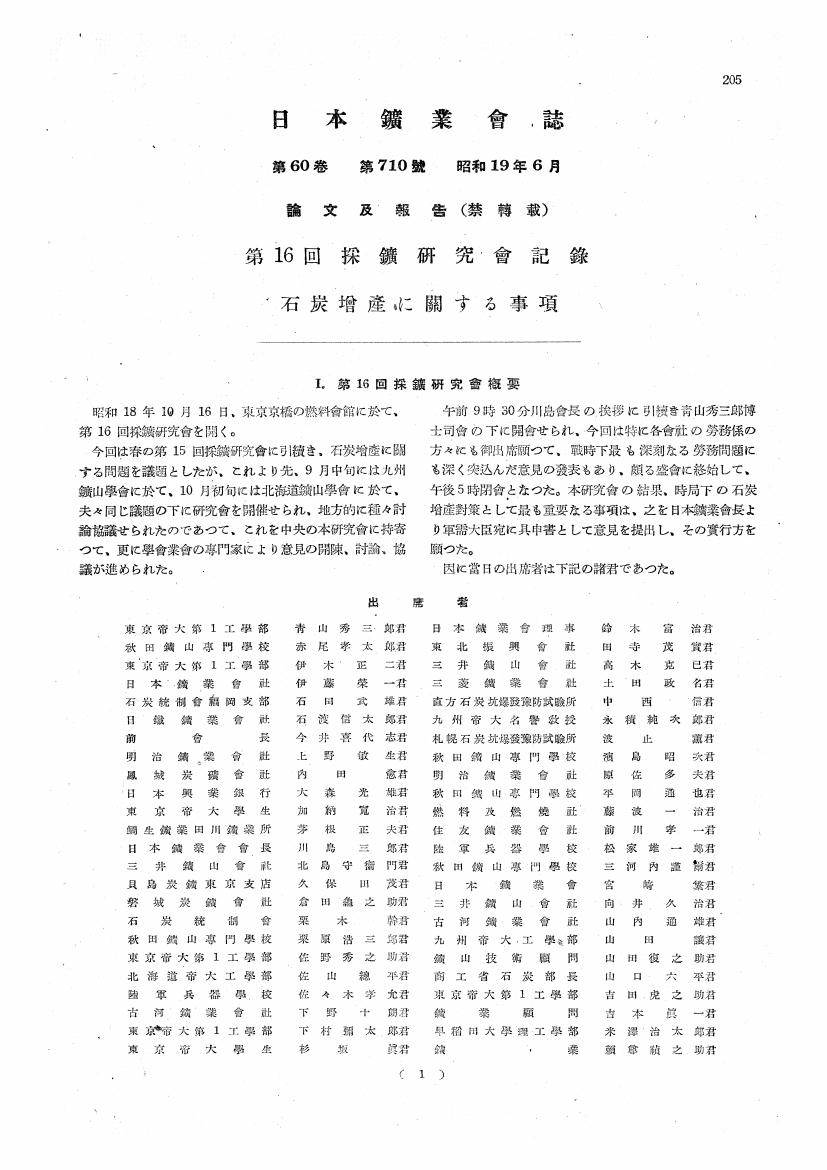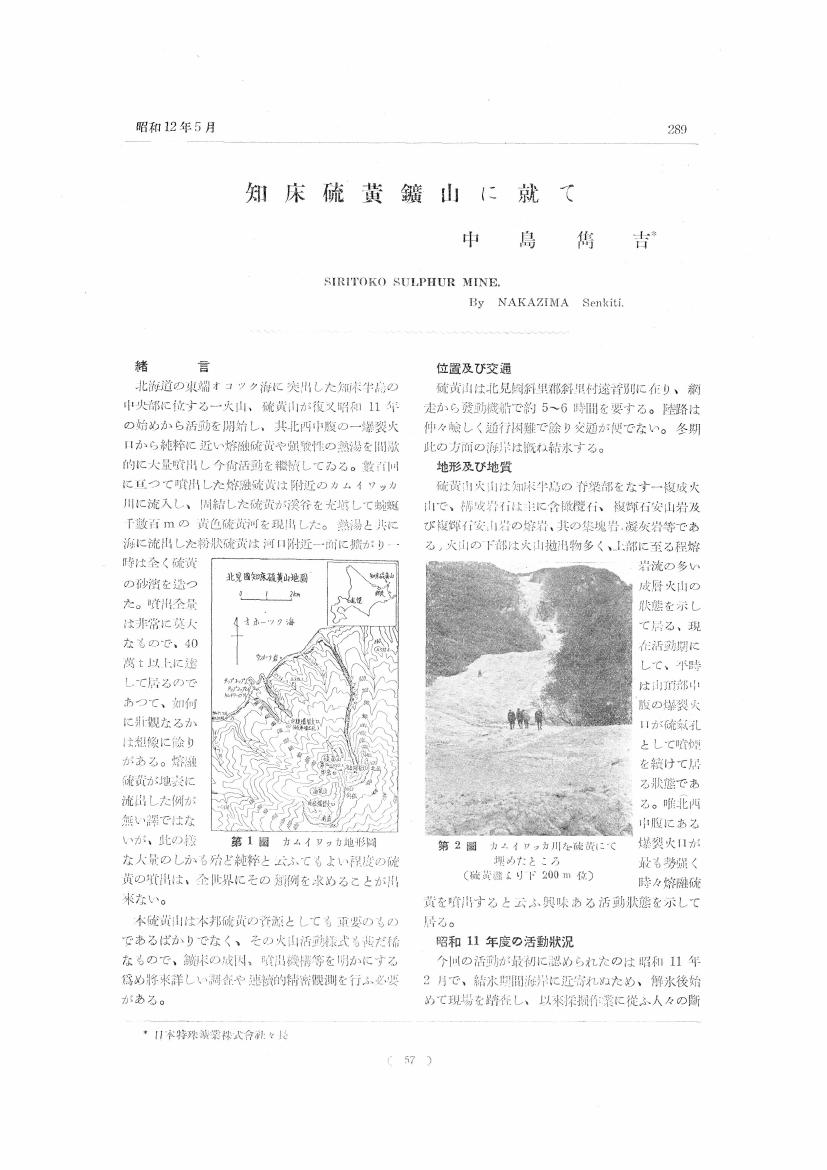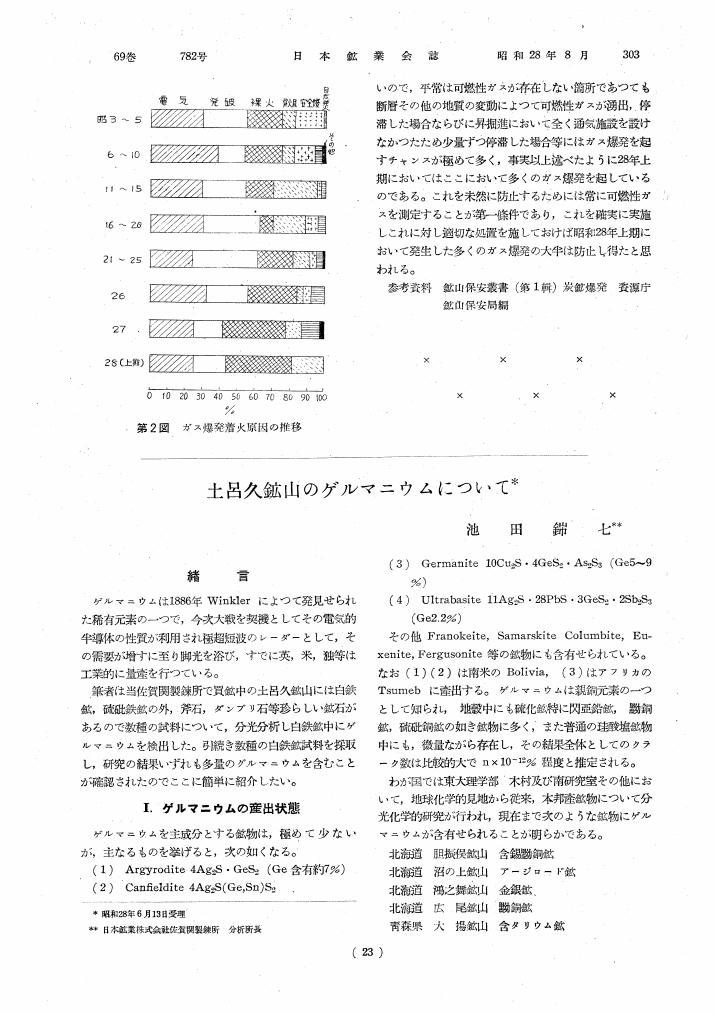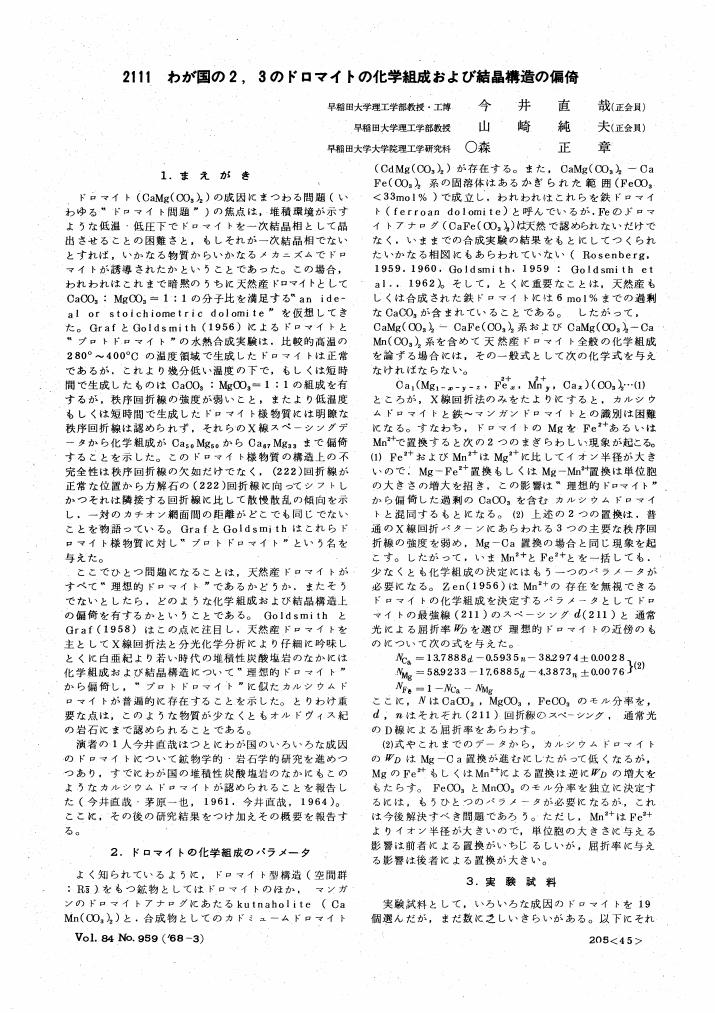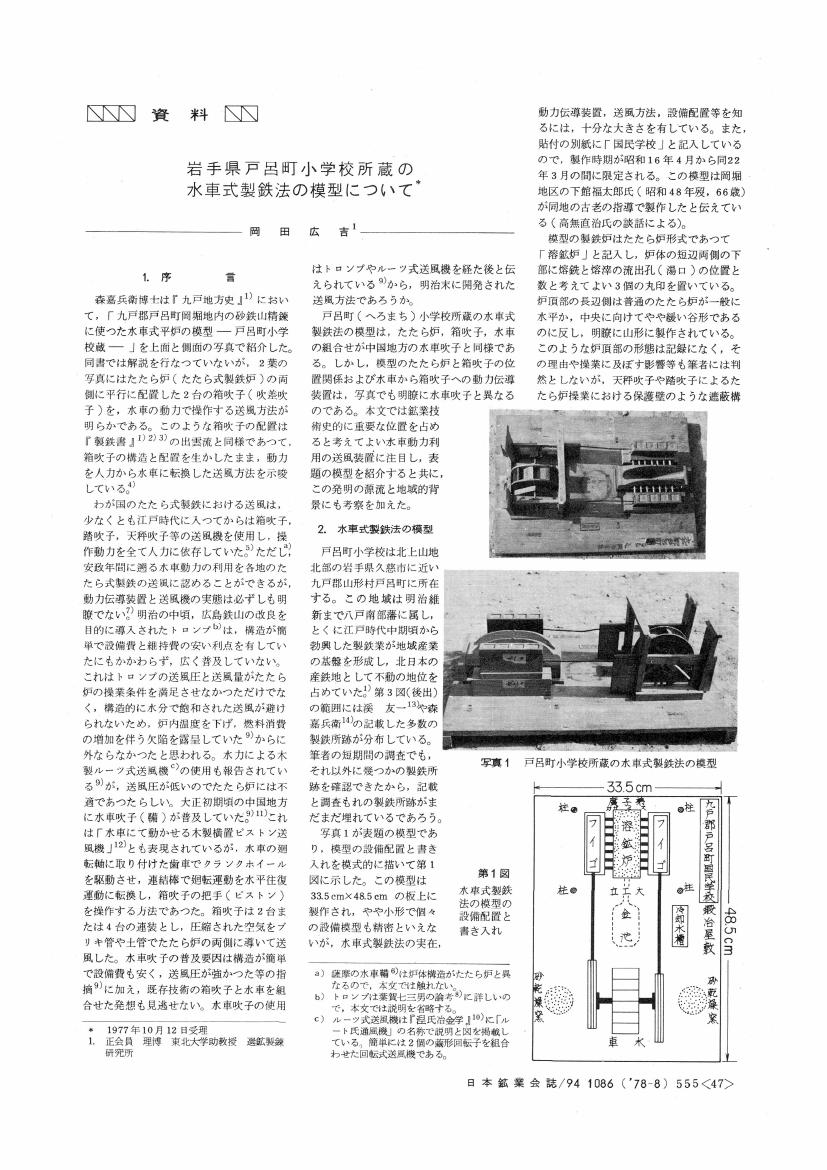2 0 0 0 OA 地層処分システムの安全評価
- 著者
- 宮原 要 舘 幸男 牧野 仁史 高須 亜紀 内藤 守正 梅木 博之
- 出版者
- 一般社団法人 資源・素材学会
- 雑誌
- 資源と素材 (ISSN:09161740)
- 巻号頁・発行日
- vol.117, no.10, pp.801-807, 2001 (Released:2006-01-08)
- 参考文献数
- 23
- 被引用文献数
- 2 1
The second progress report, H12, documented research and development progress for the high-level waste disposal made since the publication of the earlier the first progress report (H3) in 1992. The concept of geological disposal in Japan is similar to that considered in other countries, being based on a system of multiple passive barriers consisting of the geological environment and an engineered barrier system. The disposal system considered is generic, in the sense that no single rock type and no siting area have so far been identified. H12 performance assessment provided a test for the robustness of the system concept based on intentional siting and design, taking account of a wide range of Japan's geological environment. The assessment included a comprehensive evaluation of uncertainty and potentially detrimental factors, including perturbations due to external events and processes. Despite the considerable uncertainty at the current stage of the Japanese program, a safety case that is adequate for the aims of the assessment can be made by a strategy of employing conservatism where there is uncertainty and stressing the reliability and effectiveness of the performance of the near field. The aim of this paper is to summarize arguments that should build confidence in the findings of the H12 assessment.
1 0 0 0 OA 衝撃試験とD E M シミュレーションによる電子スクラップの単体分離機構の考察
- 著者
- 辰本 拓也 綱澤 有輝 小板 丈敏 高谷 雄太郎 小山 恵史 所 千晴
- 出版者
- 一般社団法人 資源・素材学会
- 雑誌
- Journal of MMIJ (ISSN:18816118)
- 巻号頁・発行日
- vol.139, no.11_12, pp.52-62, 2023-12-29 (Released:2023-12-27)
- 参考文献数
- 18
To clarify the mechanism of liberation in the comminution process of electronic scrap (e-scrap), we attempted to express the degree of liberation by first-order kinetic equation related to impact energy. Breakage energy measurements, comminution experiments, and discrete element method (DEM) simulations were conducted on two types of e-scrap with relatively simple structures. The mechanism of the liberation was estimated from the observation of the fractions in the comminution experiments. The results of the breakage energy measurements and DEM simulations supported the mechanism in terms of impact energy. The results of fitting first-order kinetic equations based on the cumulative specific impact energy from the DEM simulations and the degree of liberation in the experiments showed a high correlation. The fitting parameters of the firstorder kinetic equations were compared confirmed to be consistent with the mechanism of liberation and the breakage energy measurements, suggesting the numerical validity of the equations. In conclusion, it was shown that for e-scrap with relatively simple structures, the first-order kinetic equations of the cumulative specific impact energy calculated by DEM simulations can be used to evaluate the degree of liberation.
1 0 0 0 OA 含金銀粘土鉱の開発
- 著者
- 佐々木 誠一 林 健 佐々木 薫
- 出版者
- 一般社団法人 資源・素材学会
- 雑誌
- 日本鉱業会誌 (ISSN:03694194)
- 巻号頁・発行日
- vol.97, no.1119, pp.349-353, 1981-05-25 (Released:2011-07-13)
1 0 0 0 OA 基隆炭礦の現況に就て
- 著者
- 池部 龍生
- 出版者
- 一般社団法人 資源・素材学会
- 雑誌
- 日本鑛業會誌 (ISSN:03694194)
- 巻号頁・発行日
- vol.51, no.606, pp.651-658, 1935-10-22 (Released:2011-07-13)
1 0 0 0 OA 第16回採鑛研究會記録
- 出版者
- 一般社団法人 資源・素材学会
- 雑誌
- 日本鑛業會誌 (ISSN:03694194)
- 巻号頁・発行日
- vol.60, no.710, pp.205-229, 1944-06-22 (Released:2011-07-13)
1 0 0 0 OA 1 級アミンによる塩酸水溶液からのルテニウムの溶媒抽出特性
- 著者
- 武政 尚太 諸井 克哉 下前 祐也 石橋 智博 西村 竜一 新苗 正和
- 出版者
- 一般社団法人 資源・素材学会
- 雑誌
- Journal of MMIJ (ISSN:18816118)
- 巻号頁・発行日
- vol.139, no.10, pp.47-51, 2023-10-31 (Released:2023-10-28)
- 参考文献数
- 10
Ru(III) chlorocomplexes are poorly extracted into organic solvents, which is due to the charge of the complex as well as those inert character in chloride solutions, that is, formation of RuCl6-n(H2O)n(3-n)- (n=0-6). Therefore, it is difficult to extract Ru(III) by solvent extraction, and Ru(III) is currently separated and purified by the oxidative distillation method. If Ru can be separated and recovered from chloride solutions by solvent extraction, an efficient separation and recovery process for PGMs can be established. Therefore, it is important to investigate the solvent extraction of Ru(III) from chloride solutions. The authors have previously studied solvent extraction of Ru(III) with 2-ethylhexylamine (EHA), which is a primary amine extractant, from chloride solutions and shown that the extraction of Ru(III) with EHA from chloride solutions without the addition of Sn (II)was high. However, the stripping of Ru(III) was difficult. In the present study, extractions of Ru from hydrochloric acid solutions with EHA and octylamine (OA), which are primary amines, were tested to clarify the extraction of Ru and the stripping of Ru with various stripping solutions. The extraction efficiency of Ru with EHA and OA from hydrochloric acid solutions without the addition of Sn (II) was high. And also, it was found that Ru could be easily stripped from EHA with sodium sulfate solutions.
1 0 0 0 OA 酸性硫酸銅水溶液中における銅と銀および亜鉛のガルバニック対の電気化学的挙動とその場観察
- 著者
- 高崎 康志 川上 祥一 久保 雛乃 金児 紘征
- 出版者
- 一般社団法人 資源・素材学会
- 雑誌
- Journal of MMIJ (ISSN:18816118)
- 巻号頁・発行日
- vol.139, no.9, pp.39-46, 2023-09-30 (Released:2023-09-30)
- 参考文献数
- 17
The anodic dissolution reaction of copper in copper electro-refining was studied by considering the reaction of galvanic couples with different metals as impurities. In this study, zinc was chosen as a typical anodic impurity and silver as a cathodic impurity, and electrochemical measurements of galvanic couples with silver or zinc wires winding around a copper wire and in situ observation of the electrode surface using a stereo microscope were carried out. For comparison, copper wire with zinc or silver plating was used. As a result, even the simple method of winding silver or zinc wire around copper wire was able to capture the characteristic behavior of the galvanic reaction of silver and zinc on copper wire. It was also confirmed that zinc dissolution was accelerated by copper and copper dissolution was accelerated by silver, and that the effects were more promoted under anodic polarization. The crystallization and passivation of copper sulfate on the copper electrode surface and the dissolution behavior of silver were also observed. These results indicate that the experimental method presented in this study is an effective way to investigate the effects of impurities on the solubility and passivation of crude copper metal.
1 0 0 0 OA 白金族金属リサイクルの研究開発動向 –溶解抽出の効率化に資する化学的前処理–
- 著者
- 谷ノ内 勇樹 岡部 徹
- 出版者
- 一般社団法人 資源・素材学会
- 雑誌
- Journal of MMIJ (ISSN:18816118)
- 巻号頁・発行日
- vol.139, no.4-8, pp.29-38, 2023-08-31 (Released:2023-08-18)
- 参考文献数
- 107
The recovery of platinum group metals (PGMs) from end-of-life products or waste is essential to ensure a steady supply of PGMs and preserve the natural environment. Currently, spent automobile catalysts are necessary secondary resources for Pt, Pd, and Rh; numerous smelting and recycling companies have actively practiced their processing. However, several factors limit the efficiency of PGM recovery in the current recycling processes. Specifically, PGMs represent a small proportion of the catalyst and are difficult to dissolve in aqueous solutions for subsequent separation and purification. Various technological developments are underway to improve the efficiency and sustainability of PGM recycling process. Herein, we outline the typical industrial processes for recovering PGMs from spent automobile catalysts. Furthermore, chemical pretreatments, such as reduction, alloying, oxidation, chlorination, and sulfation, have been introduced as effective ways to leach PGMs.
1 0 0 0 OA 亜鉛製錬副産物からのガリウム, インジウムの回収
- 著者
- 阿部 秀来
- 出版者
- 一般社団法人 資源・素材学会
- 雑誌
- 日本鉱業会誌 (ISSN:03694194)
- 巻号頁・発行日
- vol.98, no.1133, pp.561-565, 1982-07-25 (Released:2011-07-13)
- 被引用文献数
- 2 1
The trace amounts of gallium and indium are contained in the Black Ore type of deposits distributed at Hokuroku area in Akita. Gallium and indium tend to be concentrated into the zinc concentrates through mineral processing.Dowa Mining Co., Ltd. began to examine the recovering process of gallium and indium in 1963 whengallium was given attention as raw material of semi-conductor, and studied manysided technique to recover both metals fromthe by-product of zinc refinery. Our gallium and indium recovery process is characterized by the zinc residue treatmentprocess of The lijima Zinc Refinery of Akita Zinc Co., Ltd. which is very useful to concentrate both metals, and also by thesolvent extraction process to separate gallium and indium from the sulfuric acid solution.Considering how to solve the problem derived from the application of the technique to the plantoperation, gallium recovering plant was constructed in Kosaka Smelter of Dowa Mining Co., Ltd. simultaneously with theconstruction of Iijima Zinc Refinery.Operation started in January 1972, and is producing high quality gallium and indium. Though only 40kg/m ofmetallic gallium and some indium hydroxides were produced when started, now 180kg gallium and 250kg indium areproduced every month.
1 0 0 0 OA 酸化銅鉱の回収
- 著者
- 若松 貴英
- 出版者
- 一般社団法人 資源・素材学会
- 雑誌
- 日本鉱業会誌 (ISSN:03694194)
- 巻号頁・発行日
- vol.98, no.1134, pp.687-693, 1982-08-25 (Released:2011-07-13)
- 参考文献数
- 38
A number of approaches to the treatment of oxidized copper have been proposed. The principal methods for copper recovery from oxidized are have included leaching, sulfidization flotation, leach-precipitation-flotation, segregation, and leachsolvent extraction-electrowinning. In this paper the basic science and performance of some of the techniques for oxidized copper processing are briefly reviewed. Further, recent trends in the fundamental investigations concerning oxidized copper processing are summarized.
1 0 0 0 OA 沸石化凝灰岩の加熱発泡性 (I) 未利用岩石資源の利用に関する研究 (第2報)
- 著者
- 小野寺 嘉郎
- 出版者
- 一般社団法人 資源・素材学会
- 雑誌
- 日本鉱業会誌 (ISSN:03694194)
- 巻号頁・発行日
- vol.100, no.1152, pp.67-72, 1984-02-25 (Released:2011-07-13)
- 参考文献数
- 28
The bloating properties of sedimentary zeolites existing enormously in Green Tuff region of our country were investigated. Pelletized bodies (9-12mm diameter) prepared from pulverized zeolites were fired in the range of 900-1350°C. Then physicochemical properties, such as specific gravity, water absorption, crushing strength etc., of the pellets were measured. Moreover, 38 mixtures prepared from mordenite tuff, silica, alumina and ferric oxide were fired in order to make clear the optimum bloating range in chemical compositions.The results obtained are summarized as follows;In many cases, air dried pellets had high crushing strength enough to permit the firing by rotary kiln. Pellets started to bloat at temperatures above 1150°C and the bloating extent increased with raising the temperature. Most of the pellets fired at higher temperature than 1100°C were impervious and their specific gravity was about 2.3-0.4. Crushing strength of the fired pelletes whose specific gravity were about 1.2-1.3 were in the range of 120-170kg, and it was about 2 times that of artificial light weight aggregates commercially produced. By the results of X-ray analysis, chemical and thermal analysis, it was guessed that a common gas-forming component in sedimentary zeolites concerning with the bloating was ferric oxide.From the firing tests of the above-mentioned mixtures, the optimum contents of silica, alumina and flux for the bloating were ascertained to be in the range of 60-70%, 10-25% and 10-20%, respectively.
1 0 0 0 OA 大谷鉱山
- 著者
- 宮地 正人
- 出版者
- 一般社団法人 資源・素材学会
- 雑誌
- 日本鉱業会誌 (ISSN:03694194)
- 巻号頁・発行日
- vol.83, no.956, pp.1619-1621, 1967-12-25 (Released:2011-07-13)
1 0 0 0 OA 知床硫黄鑛山に就て
- 著者
- 中島 雋吉
- 出版者
- 一般社団法人 資源・素材学会
- 雑誌
- 日本鑛業會誌 (ISSN:03694194)
- 巻号頁・発行日
- vol.53, no.625, pp.289-293, 1937-05-22 (Released:2011-07-13)
1 0 0 0 OA 土呂久鉱山のゲルマニウムについて
- 著者
- 池田 錦七
- 出版者
- 一般社団法人 資源・素材学会
- 雑誌
- 日本鉱業会誌 (ISSN:03694194)
- 巻号頁・発行日
- vol.69, no.782, pp.303-305, 1953-08-25 (Released:2011-07-13)
- 参考文献数
- 8
- 著者
- 石山 大三 小川 泰正 広瀬 和世 武田 知己 中村 晋作 若狭 幸 オセニェング オラオツェ ステバノビッチ ゾラン
- 出版者
- 一般社団法人 資源・素材学会
- 雑誌
- Journal of MMIJ (ISSN:18816118)
- 巻号頁・発行日
- vol.139, no.2_3, pp.10-20, 2023-03-31 (Released:2023-03-31)
- 参考文献数
- 15
In the study area of eastern Serbia, which includes the Bor and Maidenpek mining areas of the Republic of Serbia, a research of environmental evaluation of the study area was carried out by means of field survey for environment and satellite image analysis in order to establish and improve methods for assessing the environmental impact of mining areas by satellite image analysis. The results of this study showed that it was possible to efficiently determine the distribution of overburdens and tailings in a wide area based on the distribution of points having jarosite spectra, and that it was possible to distinguish waste rocks such as overburdens and tailings with high environmental impact from those waste rocks with relatively low environmental impact based on the mineral assemblage of the waste rocks estimated from satellite image analysis. In addition, if topographical data before and after mining development are obtained from the satellite image analysis, the volume of the waste rocks can be estimated, and the quantitative estimation of the amount of toxic elements dissolved from the waste rocks could be possible by combining the experimental data on the extraction of toxic elements from the waste rocks. In addition, the predicted hazardous area (Type I), where high concentration of Cu may be leached from the waste rocks revealed by the surface survey, corresponds to the area where waste rocks such as overburdens and tailings is distributed around the mine and the area where waste rocks such as tailing is distributed along the river downstream of the mine as estimated by the satellite image analysis. These results indicate that it is possible to predict the environmental impact in advance of the survey in the mining area, and to predict the environmental impact in the mining area where it is not possible to go directly to the survey and to consider guidelines for countermeasures.
1 0 0 0 OA 日本碍子におけるベリリウム製錬
- 著者
- 永井 敏郎
- 出版者
- 一般社団法人 資源・素材学会
- 雑誌
- 日本鉱業会誌 (ISSN:03694194)
- 巻号頁・発行日
- vol.84, no.963, pp.986-988, 1968-07-25 (Released:2011-07-13)
1 0 0 0 OA 野呂景義先生揮毫の「山神社」扁額 釜石市沢桧川流域の高炉によせて
- 著者
- 岡田 広吉 加藤 清一
- 出版者
- 一般社団法人 資源・素材学会
- 雑誌
- 日本鉱業会誌 (ISSN:03694194)
- 巻号頁・発行日
- vol.92, no.1064, pp.685-688, 1976-10-25 (Released:2011-07-13)
- 参考文献数
- 24
1 0 0 0 OA 春採斜坑の新運炭設備とその効果
- 著者
- 小林 佑司
- 出版者
- 一般社団法人 資源・素材学会
- 雑誌
- 資源と素材 (ISSN:09161740)
- 巻号頁・発行日
- vol.105, no.11, pp.779-781, 1989-10-25 (Released:2011-01-27)
1 0 0 0 OA わが国の2, 3のドロマイトの化学組成および結晶構造の偏僑
- 著者
- 今井 直哉 山崎 純夫 森 正章
- 出版者
- 一般社団法人 資源・素材学会
- 雑誌
- 日本鉱業会誌 (ISSN:03694194)
- 巻号頁・発行日
- vol.84, no.959, pp.205-206, 1968-03-25 (Released:2011-07-13)
1 0 0 0 OA 岩手県戸呂町小学校所蔵の水車式製鉄法の模型について
- 著者
- 岡田 広吉
- 出版者
- 一般社団法人 資源・素材学会
- 雑誌
- 日本鉱業会誌 (ISSN:03694194)
- 巻号頁・発行日
- vol.94, no.1086, pp.555-558, 1978-08-25 (Released:2011-07-13)
- 参考文献数
- 25
